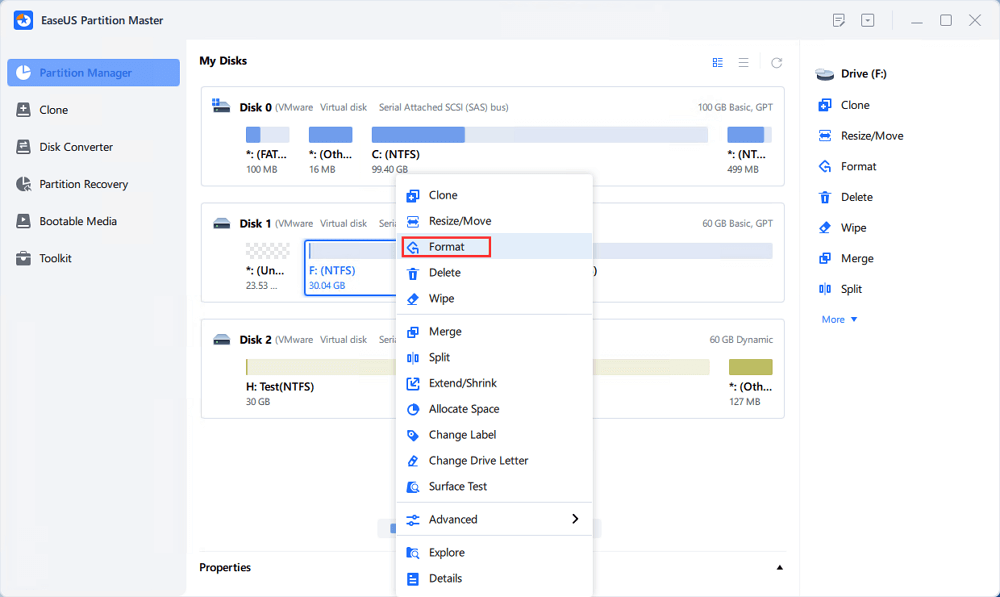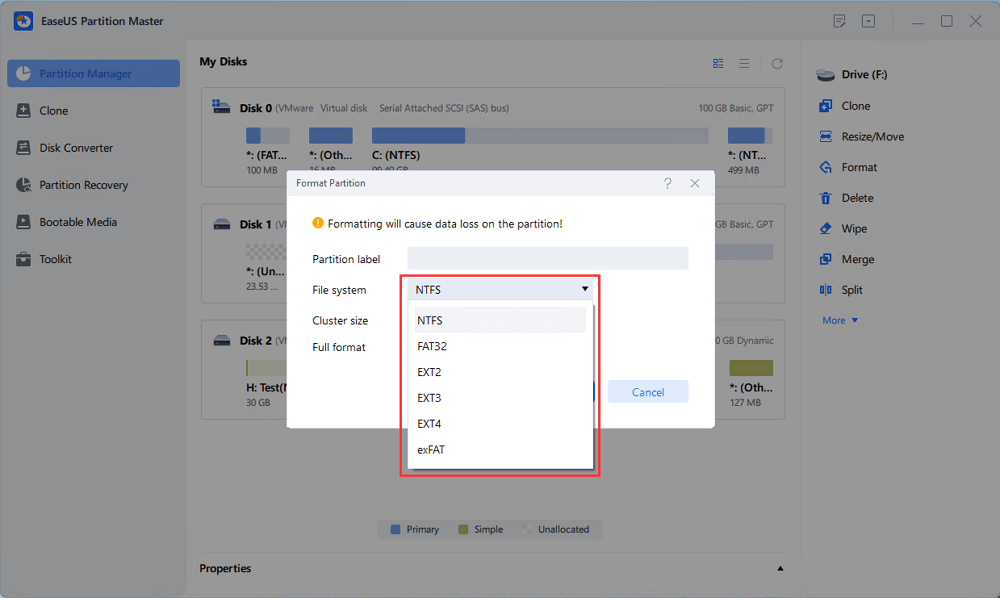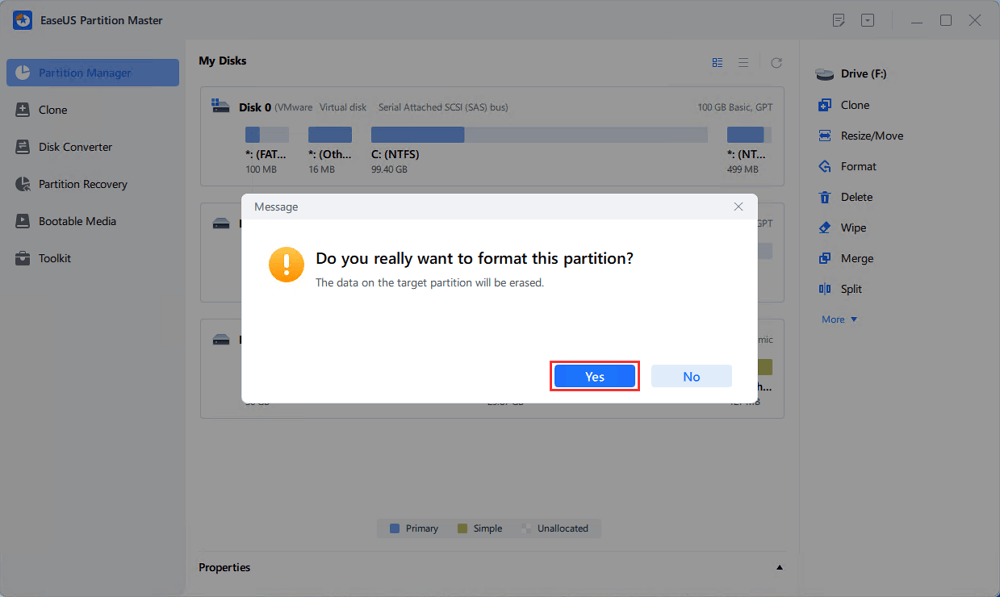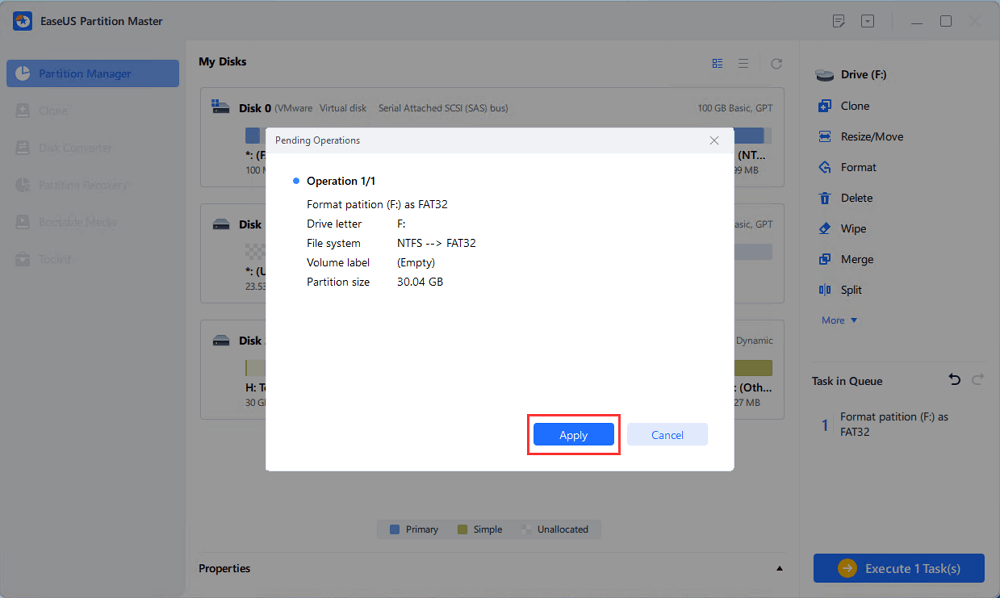Page Table of Contents
About the Author
Hot Topics
Updated on Apr 28, 2025
BitLocker is a powerful encryption feature integrated into Microsoft Windows, designed to protect sensitive data on hard drives from unauthorized access. Many users will intentionally or accidentally enable this feature to protect their privacy. Some reported dealing with the Bitlocker Recovery Key Not Found problem. In this article, EaseUS will explore the common causes of this problem and provide troubleshooting steps to help you recover your BitLocker recovery key.
Solutions to Bitlocker Recovery Key Not Found/Showing/Working
If you are facing the issue of the BitLocker recovery key not being found, the first thing you need to do is restart your computer. If the error remains, you can check the troubleshooting steps below to resolve the issue:
- #1. Disconnect All External Devices
- #2. Find the Bitlocker Recovery Key Using the Microsoft Account
- #3. Use Command Prompt
- #4. Check All Possible Backup Locations
- #5. Reformatting Bitlocker Encrypted Drive(Last Resort)
#1. Disconnect All External Devices
Removing all external devices, including power cables, can be an effective troubleshooting step when facing the "BitLocker Recovery Key Not Found" error. Refer to the following instructions to disconnect:
Step 1. First, shut down your computer(Power off).
Step 2. Remove all USB drives, external hard drives, printers, and any other peripherals connected to your computer.
Step 3. Power on your device and see if it boots normally without prompting for the BitLocker recovery key.
Before going further through the other fixes, you can share this post with your friends and family in case they come to the same question:
#2. Find the Bitlocker Recovery Key Using the Microsoft Account
One of the first places to check for your BitLocker recovery key is your Microsoft account. If you had set up BitLocker while logged into your Microsoft account, there's a chance that the recovery key was saved there.
Step 1. Accessing Your Account: Go to Microsoft Account Recovery from another device.
Step 2. Sign In: Log in with your Microsoft account credentials.
Step 3. Find Your Bilocker Recovery Key: Look for any listed devices and check if your recovery key is associated with your device.
#3. Use Command Prompt
If you're unable to enter your recovery key on the BitLocker screen, you can use Command Prompt as an alternative method. This method can sometimes bypass issues related to entering the recovery key directly:
Step 1. On the recovery screen, select "Skip this drive."
Step 2. Access Command Prompt by navigating to "Troubleshoot" > "Advanced options" > "Command Prompt."
Step 3. Type the following command and replace X: with your drive letter and
- manage-bde -unlock X: -rp
#4. Check All Possible Backup Locations
For users with multiple accounts or devices, checking other locations where your recovery key might be stored is necessary. Here are the possible locations: Microsoft account, email, external storage devices, or printouts of the recovery key:
- Microsoft Account: If you saved the recovery key to your Microsoft account, log in with aka.ms/my recovery key to retrieve it.
- Work or School Account: For devices managed by an organization, the recovery key may be stored in your work or school account. Access it by logging into your organization's portal or contacting IT support.
- Printed Copy: Check any printed documents you may have created when setting up BitLocker. The recovery key can often be found on these printouts.
- USB Flash Drive: If you saved the recovery key to a USB drive, plug it into your device and follow the prompts to access it.
By exploring these options, you may be able to locate your BitLocker recovery key and regain access to your encrypted drive.
#5. Reformatting Bitlocker Encrypted Drive(Last Resort)
Reformatting a BitLocker-encrypted drive is often considered a last resort when all other recovery options have failed. Thus, ensure you have already backed up your data since this process will erase all data on the encrypted drive. EaseUS Partition Master Free is an excellent solution for users looking to format a BitLocker-encrypted disk. This powerful disk management software simplifies the process of handling encrypted partitions, making it accessible even for those with limited technical expertise.
Step 1. Run EaseUS Partition Master, right-click the hard drive partition you intend to format and choose "Format".

Step 2. In the new window, set the Partition label, File system (NTFS/FAT32/EXT2/EXT3/EXT4/exFAT), and Cluster size for the partition to be formatted, then click "OK".

Step 3. Then you will see a warning window, click "Yes" in it to continue.

Step 4. Click the "Execute 1 Task(s)" button to review the changes, then click "Apply" to start formatting the partition on your hard drive.

Key Capabilities of EaseUS Partition Master
- Unlock BitLocker drive Without a Recovery Key
- Resize Bitlocker partition
- Bypass BitLocker Recovery Key Blue Screen
If you are still unable to recover the BitLocker recovery key, it is advisable to contact Microsoft support for further assistance and guidance.
What Causes Bitlocker Recovery Key Not Found?
The "BitLocker Recovery Key Not Found" error can occur due to several factors:
- Recovery Key Not Backed Up: The key was not saved or printed during the initial BitLocker setup.
- Inaccessible Storage Locations: The recovery key is saved in an inaccessible location, such as a Microsoft account that cannot be accessed or a disconnected USB drive.
- Hardware Changes: Modifications like replacing the motherboard can prompt BitLocker to require the recovery key due to hardware mismatch.
- Firmware Updates: Updates may disrupt BitLocker's ability to validate existing keys, triggering a request for the recovery key.
- Incorrect Key Entry: Users may enter an incorrect recovery key, leading to access issues.
- Corrupted Drive: If the encrypted drive is corrupted, BitLocker may stop accepting even the correct recovery key.
- Temporary Glitches: Occasional system glitches can prevent BitLocker from recognizing the recovery key.
To avoid encountering this issue in the future, consider these preventive measures:
- 🔔Backup Your Recovery Key: Always save your BitLocker recovery key in multiple secure locations.
- 💻Regularly Update Your Accounts: Ensure your Microsoft account information is current and accessible.
- 🚩Monitor Hardware Changes: Be cautious about making hardware changes without understanding how they might affect BitLocker.
Conclusion
Encountering the issue of the BitLocker recovery key not being found can be a stressful situation. Still, with the right troubleshooting steps and preventive measures, you can resolve the issue and protect your encrypted data. By following the steps outlined in this article and keeping your recovery key safe, you can ensure a smooth and secure BitLocker experience. Beyond common solutions, you can rely on EaseUS Partition Master to format and unlock your Bitlocker encrypted drive. Always remember to back up critical information and track where you store sensitive keys like those used by BitLocker.
FAQs of Bitlocker Recovery Key Not Found
Check this part and explore additional information on the Bitlocker Recovery Key Not Found error:
1. How do I reset my laptop without the BitLocker recovery key?
If your laptop can boot normally, you can attempt to reset it using the Windows Recovery Environment:
Step 1: Click the Power icon, hold the Shift key, and select "Restart."
Step 2: In the recovery menu, go to "Troubleshoot" > "Reset this PC."
Step 3: Choose either "Keep my files" or "Remove everything" and follow the on-screen instructions to complete the reset.
2. How do I turn off the Bitlocker encryption?
To turn off BitLocker encryption on your Windows device, you can follow these steps:
- Click on the Start menu, type Control Panel, and press Enter.
- Go to System and Security and then click on BitLocker Drive Encryption.
- Locate the drive you want to decrypt and click on Turn off BitLocker. Confirm your choice when prompted.
🚩For More Details: How to Turn Off Bitlocker in Windows 11/10
3. What triggers the BitLocker recovery key?
BitLocker recovery key is triggered by factors such as incorrect PIN entry, changes to BIOS settings, hardware modifications, or system updates. These actions can alter the system's security state, prompting BitLocker to require recovery credentials for access.
How Can We Help You
About the Author
"I hope my articles can help solve your technical problems. If you are interested in other articles, you can check the articles at the bottom of this page. Similarly, you can also check my Twitter to get additional help."
Cici is the junior editor of the writing team of EaseUS. She accepted the systematic training on computers at EaseUS for over one year. Now, she wrote a lot of professional articles to help people resolve the issues of hard drive corruption, computer boot errors, and disk partition problems.
Product Reviews
-
I love that the changes you make with EaseUS Partition Master Free aren't immediately applied to the disks. It makes it way easier to play out what will happen after you've made all the changes. I also think the overall look and feel of EaseUS Partition Master Free makes whatever you're doing with your computer's partitions easy.
Read More -
Partition Master Free can Resize, Move, Merge, Migrate, and Copy disks or partitions; convert to local, change label, defragment, check and explore partition; and much more. A premium upgrade adds free tech support and the ability to resize dynamic volumes.
Read More -
It won't hot image your drives or align them, but since it's coupled with a partition manager, it allows you do perform many tasks at once, instead of just cloning drives. You can move partitions around, resize them, defragment, and more, along with the other tools you'd expect from a cloning tool.
Read More
Related Articles
-
What Is Command Prompt, How Do I Open and Use It [2025 Guide]
![author icon]() Tracy King/2025/04/28
Tracy King/2025/04/28 -
How to Upgrade eMMC to M.2 [Step-by-Step Guide]
![author icon]() Sherly/2025/04/28
Sherly/2025/04/28 -
How to Partition External Hard Drive in Windows 11/10/8/7
![author icon]() Jean/2025/04/28
Jean/2025/04/28 -
How to Merge D and E Drive (No Data Loss)
![author icon]() Oliver/2025/04/28
Oliver/2025/04/28
Hot Topics
EaseUS Partition Master

Manage partitions and optimize disks efficiently








